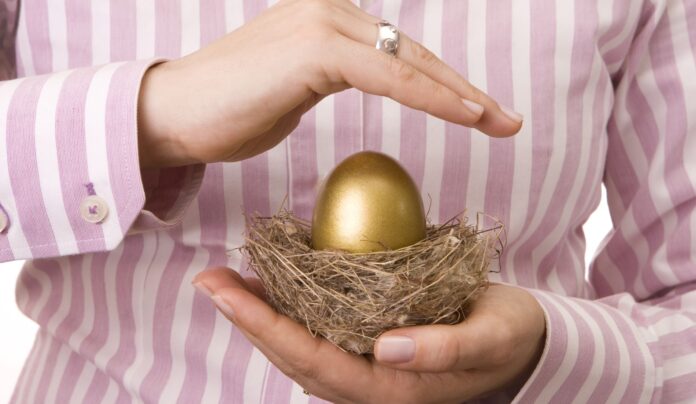By Samantha Compton
This month, I’m introducing the last principle in this series, Financial Principle #5: Protect the Income, Grow the Rest. This principle will be most relevant to those 5-10 years or less away from retirement. But, even if you are not there yet, this information should be tucked away for the future. This principle is part of a solid base of understanding that can help guide you through the seasons and phases of your financial life.
In the last few months, I have focused on defining the Growth Bucket and explaining its importance. For those who are just starting to save, up until around age 55, the Growth Bucket is the main focus. This is what all of our employer-sponsored plan savings and IRA savings are geared toward. Within those accounts, most want to know that their savings efforts are growing at the highest rate they can, depending on market conditions.
However, as we consider retirement, we begin to wonder about things we may have never considered before. Which might lead to questions like:
- At what age should I start thinking about retirement?
- How much do I need to have saved to create the income I need in retirement?
- How should I be invested as I get closer to retirement? Should I have less risk in my portfolio?
- What if the market crashes the year before I plan to retire?
These questions are very valid. And the answers can be vastly different from one individual or couple to the next. This is where Principle #5 comes in: Protect the Income, Grow the Rest.
The Accumulation, Distribution, and Preservation Phases of Investing
It is a widely held belief that there are 2 phases of investing in a person’s life. The 1st is the Accumulation Phase, during which a person focuses on “accumulating” money through saving and then growth on that saving through investing. The 2nd phase is the Distribution Phase. That phase begins when the money that is saved over the years is then “distributed” back and spent on living expenses and other activities in retirement.
But there is another phase that is extremely important. It falls between the other two phases and lasts about 5-10 years. We refer to it as the Preservation Phase. Many are not aware of the need for this phase. And because of that, many have suffered the consequences of NOT incorporating this phase.
The Preservation phase focuses on evaluating how much monthly or annual income might be needed in retirement and how much of the overall saved assets should be “preserved” to create that income. And yes, there ARE ways to effectively “preserve” assets needed for income.
But, what if we skip over the Preservation stage? What are some of the risks of not evaluating and implementing a preservation strategy if it’s needed? What are the dangers of going from the Accumulation Phase directly to the Distribution Phase?
The best example of this is the many people who planned to retire in 2008 and had to delay their retirement as they watched their 401k balances spiral downward that September. That downward trend lasted about 18 months and would take many investors much longer than that to recover.
However, what if those same people who were forced to delay their retirement had instead followed Financial Principle #5: Protect the Income, Grow the Rest? What if they had implemented a preservation strategy 5-10 years earlier, or even just a year or two earlier? Those who had done that would probably not have had to delay their retirement at all!
Over the next couple of months, we’ll be taking a closer look at how to evaluate if you have a need for preservation, how much to preserve if you do, and we’ll take a high-level look at products or solutions that might be considered to preserve those assets needed for income.
Action Step:
If you think you are 5-10 years away from retirement or less, begin by writing down exactly when you would like to retire. Then, consider creating an online account with Social Security at ssa.gov to find out what your anticipated benefits are. These amounts will be needed to calculate how much additional income you’ll need to create from your assets in retirement.










